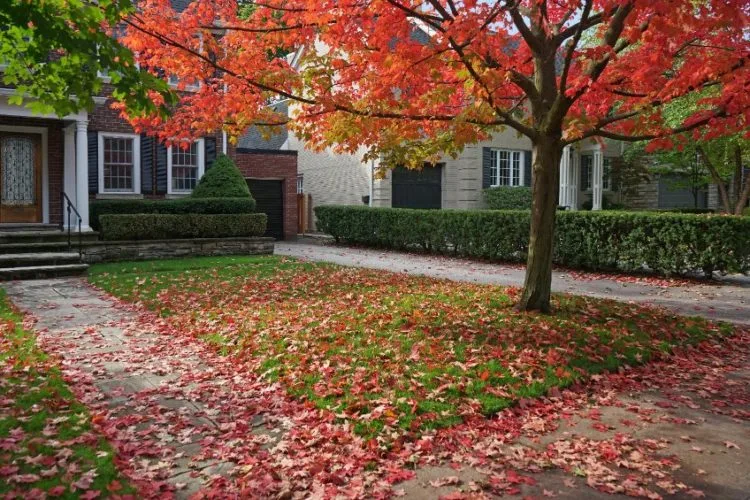When fall starts approaching, people start getting excited about doing less yard work. The truth is though, there’s still work to be done in order to prepare for winter.
One question on a lot of people’s minds is, when is the last time to mow before winter?
You should switch to bi-weekly mowing around mid-October and plan to do your last mow of the season at the end of November. The last mow should happen before the first frost.
Ideal conditions for the last mow of the season
Start off by researching the first predicted frost date. The first frost date could happen anytime from October 16th-December 31st, depending on where you live.
In North Texas, the first freeze usually happens around the end of November. Once you know the first freeze date, you can schedule a few times to mow prior to that date.
On each of these fall mows, gradually lower the blade height each time. Remember to never cut more than 1/3 of the grass blades height at one time.
When you notice daytime temperatures are starting to dip below 50 degrees Fahrenheit, this is your clue that the first frost is steadily approaching.
It is recommended to leave your grass blades at a height of 2-2.5 inches tall for winter. This may vary a little for different grass types. Contact Evergreen Lawn and Landscape to see what we recommend for your specific grass type.
Too short-what happens?
Grass that is cut too short will most likely go into shock when the freezing weather arrives. Blades that are too short will have a harder time getting the nutrients they need to survive the winter.
When grass blades are too short, it makes it harder for the turf to absorb sunlight. Not receiving adequate sunlight will quickly cause damage to the crown of the grass blades.
RELATED TIP: When to Fertilize Lawn in Fall in Texas
If this happens to you, you’ll spend a big chunk of time and money in spring helping your lawn recover from these stresses.
Too long-what happens?
If you leave your grass blades too long over winter, you’re inviting mold and funguses to develop.
When precipitation such as rain, sleet, or snow builds up on lawns, the long grass blades will become matted. Matted grass blades will fall down on top of each other, trapping the moisture in and allowing diseases to grow and spread.
It is also worth mentioning that you should not mow immediately after a frost because the frozen grass blades will crack and break under the pressure of the heavy lawn mower.
Bi-weekly mows

Even though grass is beginning to enter its dormant stage during fall, your lawn is still growing, albeit, very slowly. Which means, it still needs to be properly maintained and cared for.
Most lawn specialists recommend switching to bi-weekly mowing during the month of October. Some lawn enthusiasts continue to mow from December-February and if requested, this is a service Evergreen Lawn and Landscape offers with our lawn maintenance service.
General Fall Lawn Care Tips
- Rake leaves and other debris from lawn as needed
- Progressively lower the height of your grass
- Fertilize
- Apply a lawn winterizer if needed
- Trim trees and shrubs
- Repair bare or thin spots in lawn
If you are unsure about which of these things are needed for your lawn, don’t hesitate. Call Evergreen Lawn and Landscape today. Look into our general clean-up service for fall and spring to find out how we can assist you.
RELATED TIP: Preparing Lawn for Fall
Wrapping Up

There’s a lot to be done in fall to prepare your lawn for winter weather. If you do the right things at the right times, you’ll find yourself enjoying a thick carpet of lush, green grass when spring arrives.
We also offer a tree trimming service. We recommend getting this done during the winter months when trees are in their dormant stage. Tree trimming when trees are dormant lessens the chance for diseases or pests to spread.
Evergreen Lawn and Landscape is here to help. You don’t have to do it all on your own.



Comments (0)
Thanks for your comment!
Thanks for your feedback! Your comments have been successfully submitted! Please note, all comments require admin approval prior to display.
Error submitting comment!
There is a problem with your comment, please see below and try again.